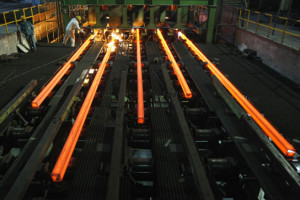07
Apr 2016
ZOMBIE COMPANIES IN CHINA
Zombie Companies. It is the term for companies that continue to operate even though they are insolvent or near bankruptcy. Most analysts expect zombie companies to be unable to meet their financial obligations. Zombie companies have been mentioned as one of the many reasons of China’s economic slowdown.
“In current circumstances, it is impossible to expect a V-shaped economic recovery, while an L-shaped growth period will be more likely,” an analysis by an authoritative figure in China. Based on People’s Daily article about China’s economy. The article made a heavy point on “indecision now leads to trouble later” and to “bury zombie companies”. It is said also that reform sometimes meant sacrifice, and volatility was one of the costs that reformers must endure.
It’s the supply side, not the demand side
Based on China’s latest NPC (government’s annual meeting), the government pointed the supply-side structural reform. It is the term which economists use as the world’s second largest economy moves to address outstanding issues like excess capacity, housing overhang, and “zombie” state-owned enterprises (SOEs) with poor profitability.
Based on the supply-side economics, the best way to stimulate growth is to lower barriers to production, especially through tax cuts and China’s supply-side reform will include three key elements, which are industrial policies on new supplies, tax cuts and restructuring the corporate sector.
“Restructuring the corporate sector” here, for China, means cutting down the “zombie” companies and the writing off of associated bad debts. It is said that this will be their priority as well as the capacity reduction.
Inside China’s steel factory at Hangzhou
A real example of the capacity reduction: there are several industries which have excess capacity, like iron and steel, coal mining, cement making, ship building, aluminum and flat glass. A 20% reduction of capacity in those industries may lead to a loss of 3.56 million jobs!
“Pains will be unavoidable, but worth it!”
There is a time for everything
Thank to the capital market’s new rules, it makes fundraising easier for enterprises and IPOs will have less bureaucratic intervention as a new registration system takes place. The number of new IPOs on the Chinese A-share market is forecast to hit 400, raising more than 250 billion yuan (38.4 billion U.S. dollars). This could make Chinese mainland be the largest IPO market in 2016, based on PWC’s analysis.
There are more than 250 companies listed in the Shanghai and Shenzhen stock exchanges and they are reported negative adjusted earnings per share for over the past three years, giving average debt-to-asset ratios over 68 percent.
Once again, zombie companies are about to be blamed! And yeah, they have to be blamed for the systemic risks in the Chinese capital market and eliminating them will improve the capital price structure.
But, to take note, there are 5 things that China has to face. De-leveraging, de-stocking, reducing costs, reducing overcapacity and shoring up weak growth areas will be China’s tasks to make the supply-side reformation more effective.
“Every member of humanity has the potential to become members of the success story of a creative economy – Park Geun Hye (President of Republic of Korea)”
Source: Xinhua News

































